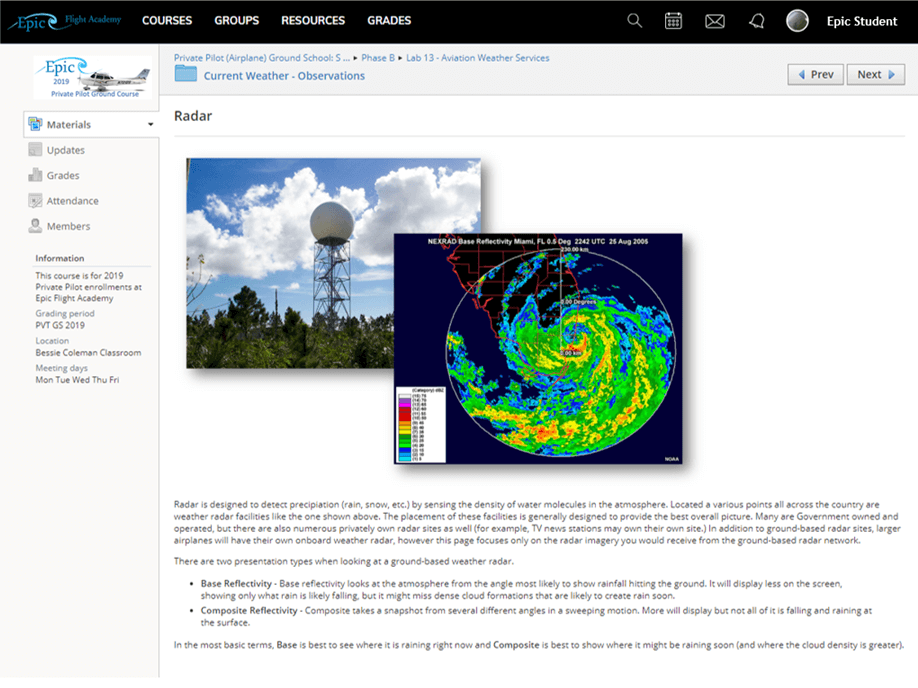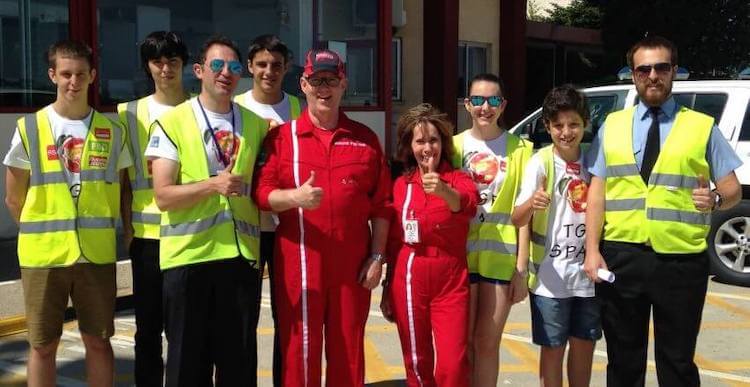Madrid, Spain: Captain Judy Rice with Madrid students
Captain Judy’s Corner: Pilot Technology and Problem-Solving
“Our fuel stop was forecasting ceilings (clouds) at the lowest landing minimums and a slow moving line of thunderstorms…”
Pilots rely on technology and problem-solving skills. My crew met me in the lobby for a quick cup of coffee before checking weather and then pre-flighting the Citation. We had our flight plan on file from our departure: Regina, Canada (CYQR) to Churchill, Canada (CYYQ) for a fuel stop, and then to Iqaluit, Canada (CYFB). This would be our final destination on our second night of this world flight voyage.
Our fuel stop was forecasting ceilings (clouds) at the lowest landing minimums. There was a slow-moving line of thunderstorms while our destination was reporting clear skies throughout the day and at the estimated time of landing. I reviewed our options with my crew, and then I reached out to the 10,000 students participating with us on our world flight and asked, “What would you do?”
Connecting through Technology
Through the use of technology, I was able to connect these students from all over the world. The mission of this global flight was to educate students, with good decision-making skills included. These students from 50 countries had been working together for more than five years. Students problem-solved on assigned imaginary flight challenges, solving each as a unified team. Posing our fuel stop weather conditions would be the students’ first participation on real problem-solving.
We posed the question on the Think Global Flight social media accounts and blog and waited for the students to reply. Students from Madrid, Spain led the discussion, identifying an airport with fuel west of the weather called Pickle Lake (CYPL). It was remarkable that neither language nor time zone differences were a challenge for these students. Imagine students living in Spain where it was 7 hours earlier than Canada. There were also students from China, which was 14 hours ahead of Canada. And then the students from India had a time difference of 11.5 hours earlier. Students were dedicated and determined in every way, adding to their success and our world flight’s.
Problem solved!
I refiled our flight plan to include Pickle Lake, then added another fuel stop. There was plenty of margin around the thunderstorms, and we would be clear to our destination. Our arrival into Iqaluit would be much later than planned, but this was the safest course of action.

Technology Connects Us
Today’s technology has no boundaries when reaching across the globe. Through technology, students connected with each other, and in many cases became life-long friends during my world flight. These students often did not speak the same language, and they might never meet in person, but they shared the same goals. Epic Flight Academy recognizes the value of using technology when teaching and collaborating similarly to how we used it on our world flight. Our students experience the advantage of our Virtual Flight Academy online course, which they access from their home country. With the use of Epic’s learning management system, Schoology, students can access everything. We provide the necessary lessons, resources, and connections needed to begin their journey into the professional pilot world.

“Captain Judy,” as she is affectionately known, is a world-class aviator who teaches Ground School at Epic Flight Academy. Read more articles by Captain Judy Rice!

